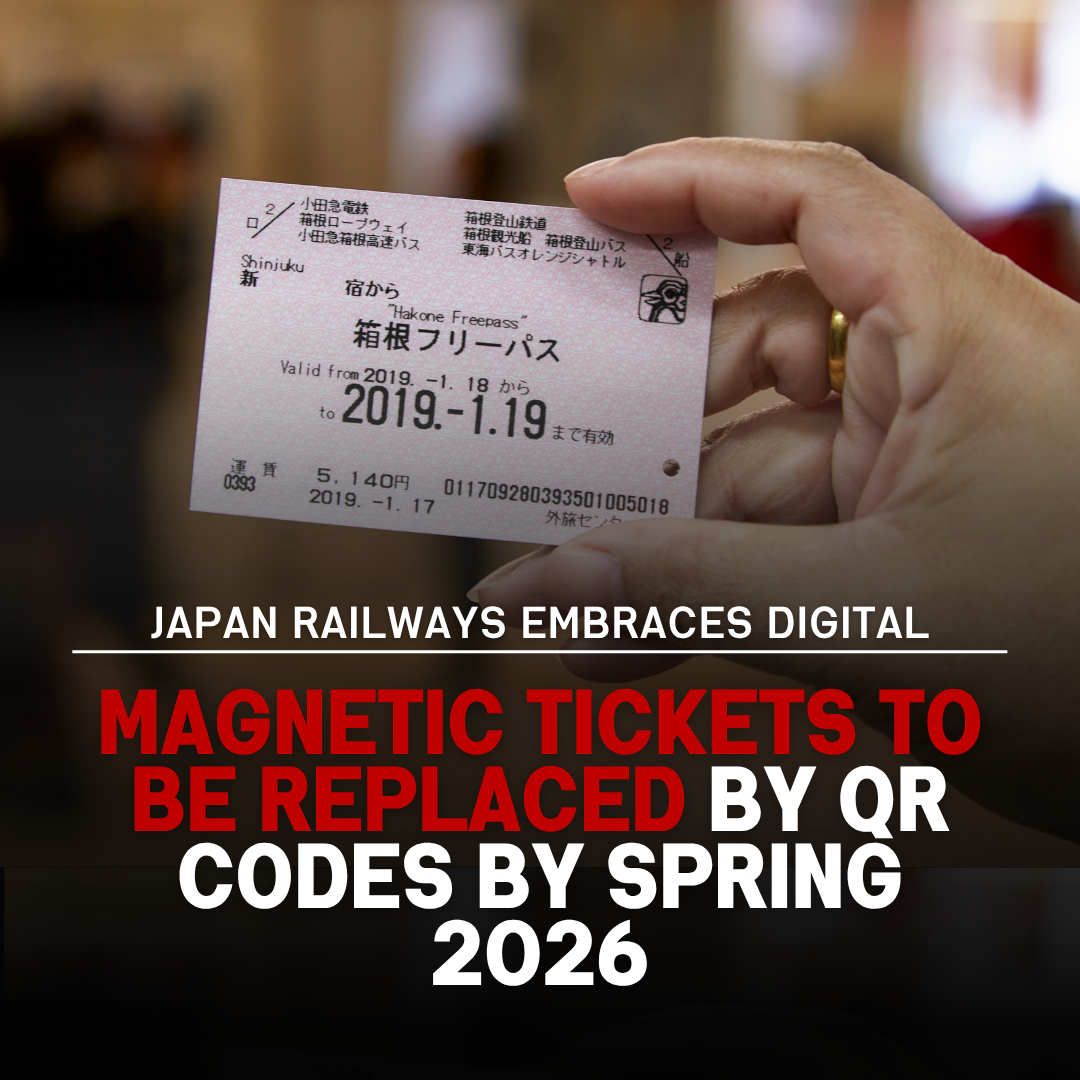Japan Railways Embraces Digital: Magnetic Tickets to Be Replaced by QR Codes by Spring 2026
In a move signaling the next phase of modernization in Japan’s world-famous railway system, several JR (Japan Railways) branches have announced a major shift from traditional magnetic stripe tickets to digital QR code-based tickets. This change, expected to be rolled out by Spring 2026, marks a significant step in improving efficiency, reducing environmental waste, and enhancing the travel experience for both locals and international visitors.
Why the Change? Sustainability and Simplicity
Currently, most paper train tickets in Japan use a magnetic stripe to record data. While reliable, these magnetic tickets are difficult to recycle due to the embedded magnetic components, contributing to unnecessary waste. The switch to digital QR codes will make the entire ticketing system more sustainable, reduce plastic and paper usage, and streamline operations.
As QR tickets can be scanned via mobile devices or printed on recyclable paper, they present a far more eco-friendly solution—especially important in a country where public transport is used by millions every day.
Which JR Lines Are Switching to QR Code Tickets?
The shift is being gradually adopted across multiple JR Group companies, including JR East, JR West, JR Central, JR Kyushu, and JR Shikoku, with a goal to implement digital ticketing systems across all major lines by spring 2026. Travelers can already spot trial runs and expanded digital gates in several major stations across Tokyo, Osaka, and other metropolitan areas.
While IC cards like Suica, PASMO, and ICOCA have long offered tap-and-go convenience, this new rollout will apply even to reserved seat tickets, limited express trains, and long-distance journeys, making digital QR ticketing the new standard for most rail services.
What Does This Mean for Travelers?
If you’re planning to visit Japan after 2026, you can expect to see fewer paper tickets and more mobile-based ticketing options. You’ll likely purchase your JR tickets online, receive a QR code directly to your smartphone (as is already started via SmartEx for most JR Central and JR West train lines), and simply scan it at the gate—no need to visit a ticket machine or worry about losing a paper stub.
For international visitors, this change is particularly welcome. With easier access to mobile ticketing platforms, booking rail travel in Japan will become more intuitive, reducing language barriers and physical waste alike.
Japan’s Future as a Smart, Sustainable Travel Destination
With over 7 billion train journeys taken in Japan each year, this transition is a massive logistical undertaking—but one that reflects Japan’s commitment to cutting-edge innovation and sustainable travel. As QR codes become standard, Japan further cements its status as one of the most efficient and eco-conscious countries to explore by train.
Need Help Navigating Trains in Japan?
Japan’s rail network can feel overwhelming — from JR Passes and regional rail lines to limited express trains and alternative routes. If you’re looking for clear, practical advice, we’ve got you covered.
Explore our Free Japan Travel Guides for step-by-step tips, or get personalised support planning the most efficient routes and travel days with Japan Junket.
Get Help Planning Your Japan ItineraryYou May Also Like
Related Travel Guides






